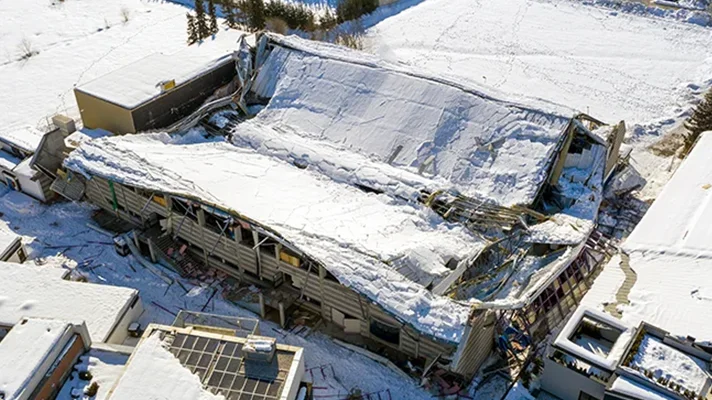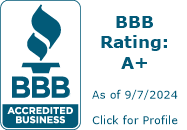Secure your future with Business Insurance!
Winterizing Buildings – Avoid Freezing and Collapses

Any building that’s located in an area with below freezing weather and snow is subject to damage from frozen pipes, water leaks, or roof collapses that can damage buildings and interrupt business or a home. These losses also occur during cold or snowy periods which makes repair and restoration difficult to schedule and complete. Practical steps can be taken to reduce the risk for damage from cold weather.
Planning
- Time is critical. Identify key contractors or vendors that you may need to call.
- Develop a list with phone numbers for key people that may need to be contacted, both on staff and externally.
- Before cold weather arrives, survey your building to look for freeze up hazards or potential roof problems due to snow accumulation or drain problems.
Inspections
- Inspect the building to identify sections or equipment that would be subject to freezing.
- Entrances or areas along exterior walls with pipes that are subject to freezing if heat is lost.
- Any pipes or equipment that require anti-freeze.
- Equipment that should be drained or winterized.
- Service any equipment that requires proper lubrication during cold weather.
- Look for building areas where heat can be lost, or cold can penetrate. Examples include missing insulation, windows, doors that don’t seal, or other openings.
- Unless they are designed to resist frost and freezing, shut off, drain, and protect outside hose faucets.
- Drain any low point drains on water systems or sprinkler systems that are installed for that purpose.
- Use non-freezing fire extinguishers in unheated areas, which include carbon dioxide or dry chemical agents.
Monitoring
- Watch weather reports and designate a backup person to watch weather. Have a plan in place to
check and protect hazards for unusually cold weather of for heavy snowfall. - Maintain indoor temperatures of 40°F or higher for freezing hazards, unless lines have been
drained or winterized. - Keep thermometers and thermostats in good working condition throughout the building.
- Maintain and monitor heat in rooms or areas with area heating. Examples include dry pipe
automatic sprinkler valve rooms, or equipment rooms that have heat in an unheated building. - Check any insulated or heated pipes to make sure that controls are working properly.
- Leave interior doors or cabinets in areas with pipes and next to exterior walls, or in colder rooms,
slightly open to allow heat into the area. This is especially important when thermostats are
lowered.
Snow and Ice Removal
- Monitor and remove snow from roofs, hydrants, sprinkler control valves, approaches, and exits.
- Keep drains and other important exterior equipment clear.
- Keep sidewalks, parking areas, and approaches clear for quick access in an emergency.
Roofs
- Fall prevention always come first when discussing roofs. Never go onto a roof to inspect or work
without following all safety precautions. - Inspect the roof before winter begins to have time to address problems.
- Look for sagging points, missing shingles or covers, cracked or damaged covers, or plugged drains.
- Note angles or sections that can collect more snow from drifting that may need to be cleaned
more often. - If the roof interior can be viewed, look for sagging members or indications of past water leaks.
Inspect attics only if they can be safely reached. - Watch weather reports and designate a backup person to watch weather. Have a plan in place to
respond if unusually heavy snow fall is expected.
Vacant Buildings
- Secure windows, doors, or other openings to reduce the risk for someone to vandalize the
building. - Maintain the interior and exterior of the building. Regularly inspect and keep doors, windows,
and insulation in place and good condition. - Drain and winterize all water pipes and equipment that is not being used if the building is not
heated to at least 40°F. - Consider monitoring building temperature using a phone app and thermostat or other devices. If
you are close enough, check the building. Consider asking someone else to check the building if
you can easily reach it.
Download This Article
Additional Safety Topics
Insurance Solutions for a Wide Range of Businesses
From contractors to coffee shops, we offer insurance designed for many types of businesses, including:
Specialty Insurance
Commercial Auto Insurance Workers' Compensation Insurance Manufacturing Insurance Insurance for WineriesConstruction and Contracting
General Contractor Insurance Carpenters Insurance Plumbing Insurance Excavator Insurance Electrician Insurance HVAC Business Insurance Lawn Care Business InsuranceRetail and Service
Retail Business Insurance Grocery Store Insurance Barber Insurance Pet Grooming Insurance Florist Insurance Bakery Insurance Photographer Insurance Beautician Insurance Coffee Shop Insurance Funeral Home Insurance Janitorial InsurancePolicyholders can request access to our On-Demand Video Training Service, which includes over 5,000 high-quality safety and human resource training videos. This service is provided at no cost to our policyholders.
View the Streamery Training Courses that are Available To get access to a Streamery course, contact your Hastings agent.

Monnit Remote Monitoring Solutions is offering Hastings policyholders a 20% discount on hardware and a 40% discount on software and connection services.
Monnit provides wireless IoT sensor solutions for remote monitoring across industries, offering real-time data tracking for temperature, humidity, motion, water detection, and more to help businesses optimize efficiency and prevent costly issues.
Secure your future with Business Insurance!
Hastings Insurance Company
404 E. Woodlawn Ave.
Hastings, MI 49058
Monday-Friday
8:00 a.m. - 4:30 p.m. (EST)
(800) 442-8277
Terms of Use and Privacy Statement© Hastings Insurance Company. All rights reserved.



